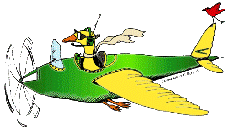Bird Strike Committee Proceedings
Date of this Version
October 2002
Document Type
Article
Abstract
Lincoln Laboratory has been tasked by the FAA to investigate utilization of existing terminal area surveillance radars as the basis for a real-time, automated bird hazard advisory system for the immediate airport vicinity. With its on-airport siting and rapid scan rate, the ASR-9 is a logical choice as the primary sensor for the Terminal Avian Hazard Advisory System (TAHAS). Using multi-dimensional image processing and fuzzy logic techniques, a bird-flock detection module that operates on ASR-9 data has been developed and was described at last year's conference. Refinements to the flock detection module are ongoing. Recent efforts have focused on detection of individual or small groups of birds. A measurement program was undertaken during 2 weeks in November 2001 at Austin-Bergstrom Airport, TX to ascertain the ability of the ASR-9 to detect individual or small groups of birds in the immediate airport vicinity. Simultaneous measurements provided by Geo-Marine's X-band Mobile Avian Radar System (MARS) were used to identify periods of bird and bat activity that were subsequently examined in the ASR-9 data. High-speed animations of ASR-9 reflectivity data revealed considerable numbers of individual bird-echo tracks in addition to the larger bird flock movements. Given this encouraging result, a real-time, high-update bird tracking module that extracts and displays individual bird tracks from ASR-9 data is being developed. An initial version of the tracking module has been completed and is described along with examples of its performance.


